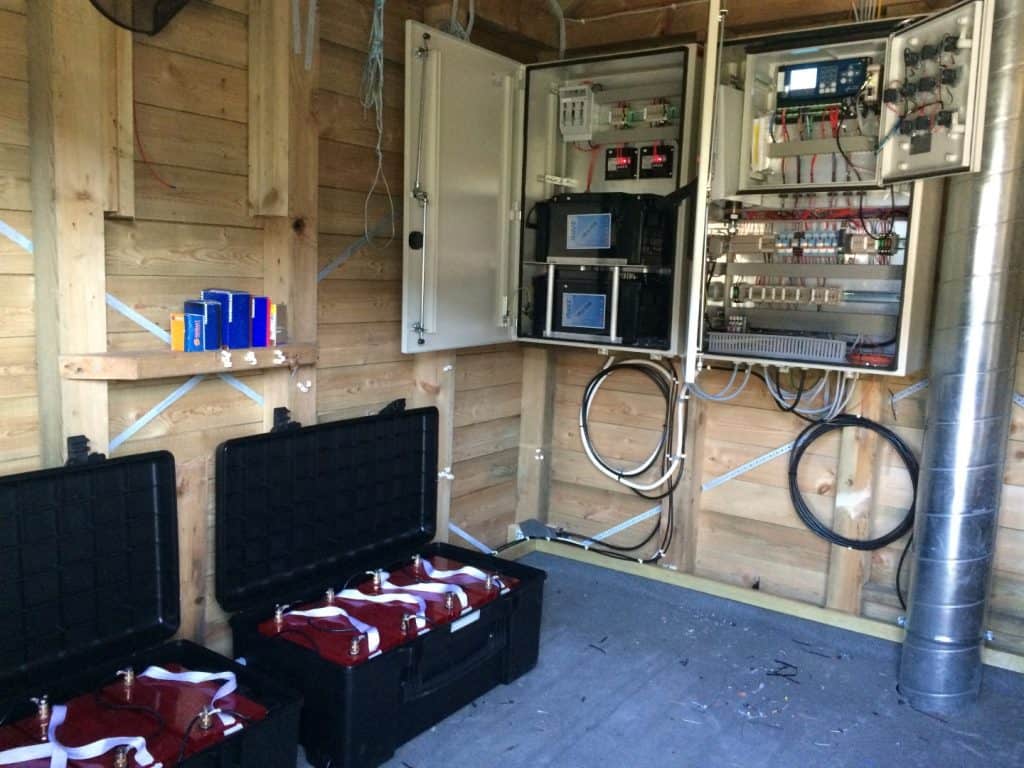Application
Scanmatic delivers solutions for use in places with limited infrastructure and deliver flexible rugged power supply solutions with high availability. The solution can be connected to several different power supply sources as listed below:
- Mains supply (230 V AC)
- Battery
- Solar panel
- Wind turbine
- Generator
- Fuel cell
The solution often uses several power sources to increase the availability of the system. The most typical combinations are listed below:
- Mains supply + battery
- Solar panel + battery
- Solar panel + wind turbine + battery
- Solar panel + generator + battery
- Solar panel + wind turbine + generator + battery
- Solar panel + fuel cell + battery
Technology
The battery uses different battery technology e.g. GEL lead acid or lithium. We provide a single battery or a battery bank consisting of several batteries operating at +2 V, +6 V or +12 V. The battery lifetime is from 12 years to 20 years depending on selected battery technology.
The battery solution may include supervision of the battery bank, implement load sharing between the battery cells and independent monitoring of each battery cell. This will typically extend the battery life time. The battery solution can be mounted in battery racks or in battery cabinets. We also deliver necessary protective equipment for handling of the batteries e.g. gloves, apron and face shield.
The battery bank is dimensioned for a backup-time of one to two weeks for a station using mains supply as the primary power source and three to four months for a station using solar panels as the primary power source. The dimensioning takes into account the reduced battery capacity at low temperatures and at end of life of the battery bank.
Solar panels are mechanically reinforced, so they can be used in a harsh environment. The solar panels can be installed on a roof, wall or on mast.
The wind turbines can also be used in a harsh environment. They can be based on horizontal axis or vertical axis turbines, and the most rugged wind turbines tolerate wind speed up to 60-70 m/s.
Petrol or diesel-powered generators deliver power levels from 2 kW and more. The generator is typically remote controlled from a data acquisition unit (DAU) e.g. PLC, IED, RTU or a datalogger. The DAU makes sure that the generator is started at the right time e.g. to charge up the battery bank or when a power plant gate or a valve shall be activated. If the generator does not start, the DAU will try several times before raising an alarm. It will not try to start the generator if the temperature is too low. The DAU monitors the generator, battery bank, start battery and fuel level.
The solution also includes ventilation dampers and shutters for ingress and egress air used for cooling the generator. Exhaust is also guided out of the generator room.
The generator can be equipped with internal or external fuel tank.
The fuel cell technology uses methanol as fuel and it is best suited for an average power dissipation of up to 100 W. The fuel cell can be used down to 0 °C, since the fuel cell may be damaged in freezing conditions. The fuel cell can be used at lower temperatures if mounted in an isolated box.
